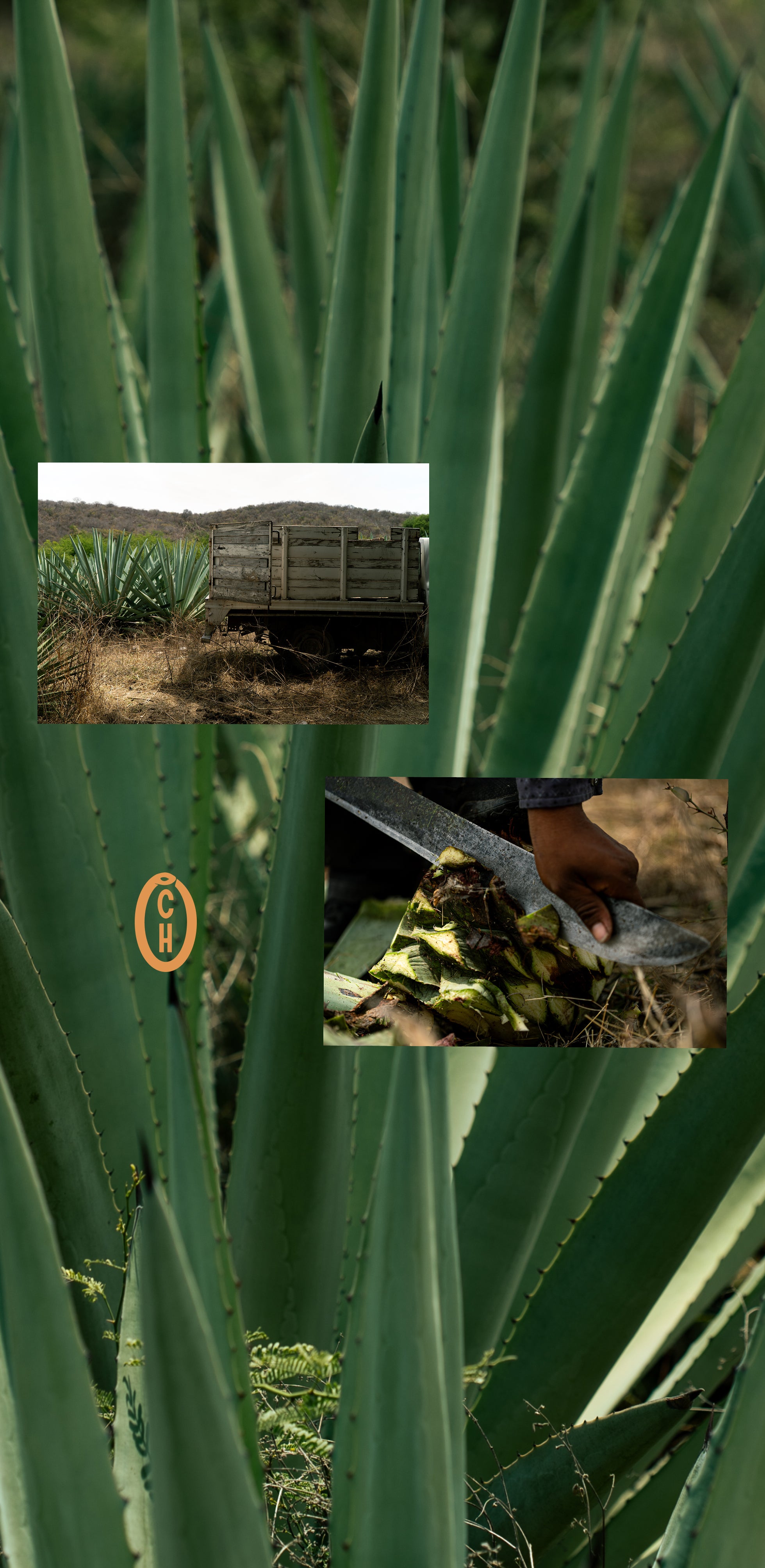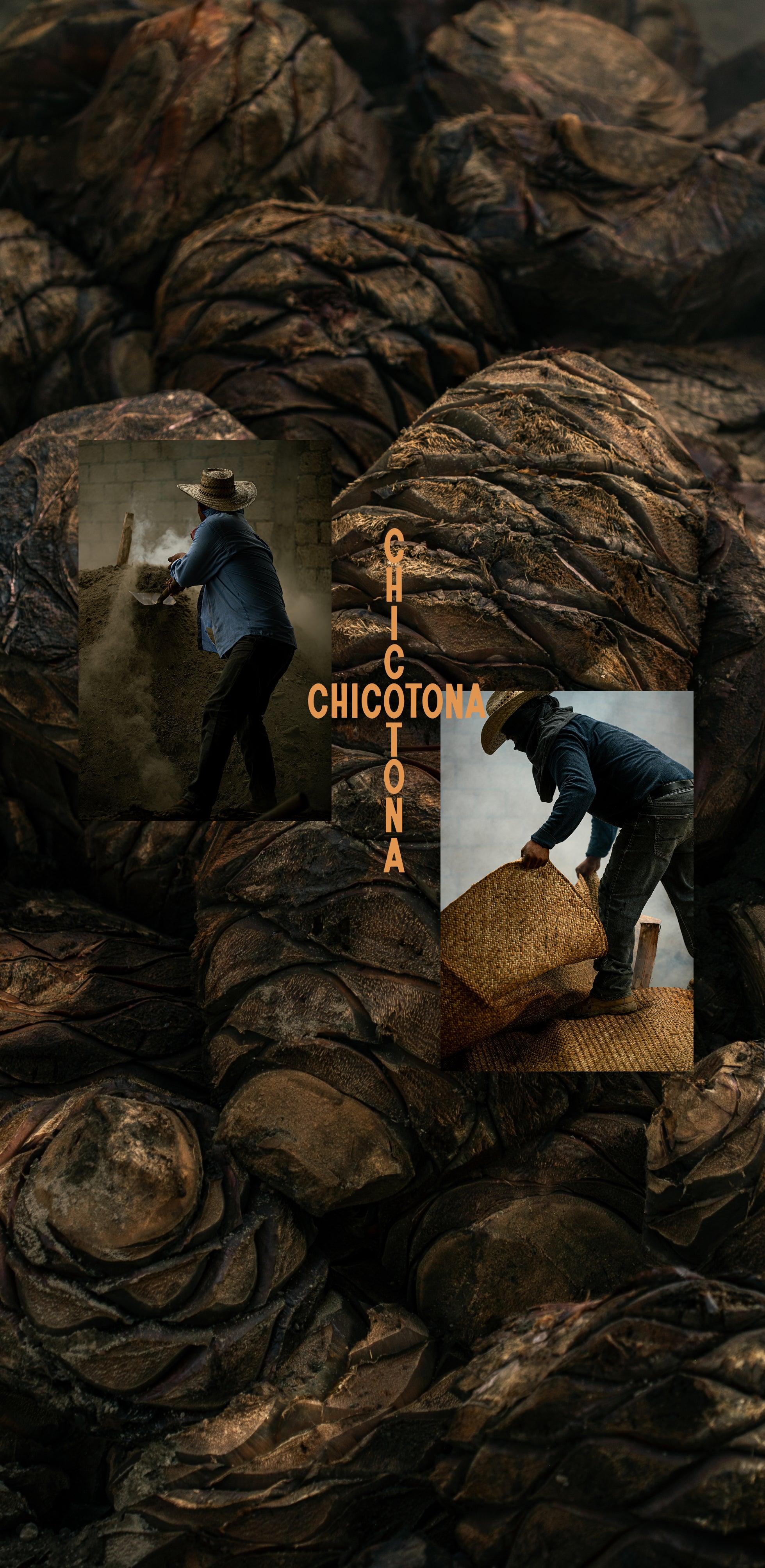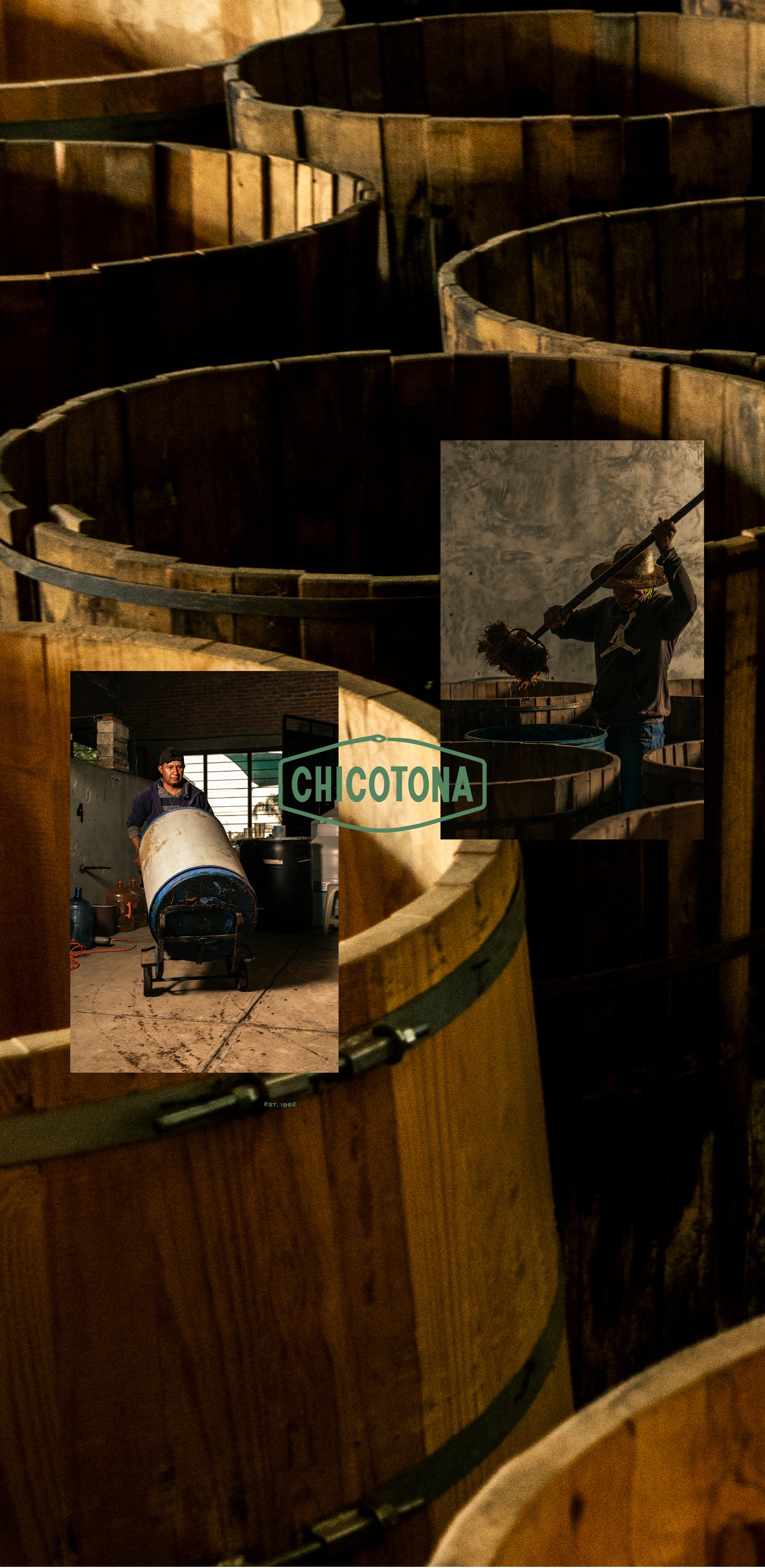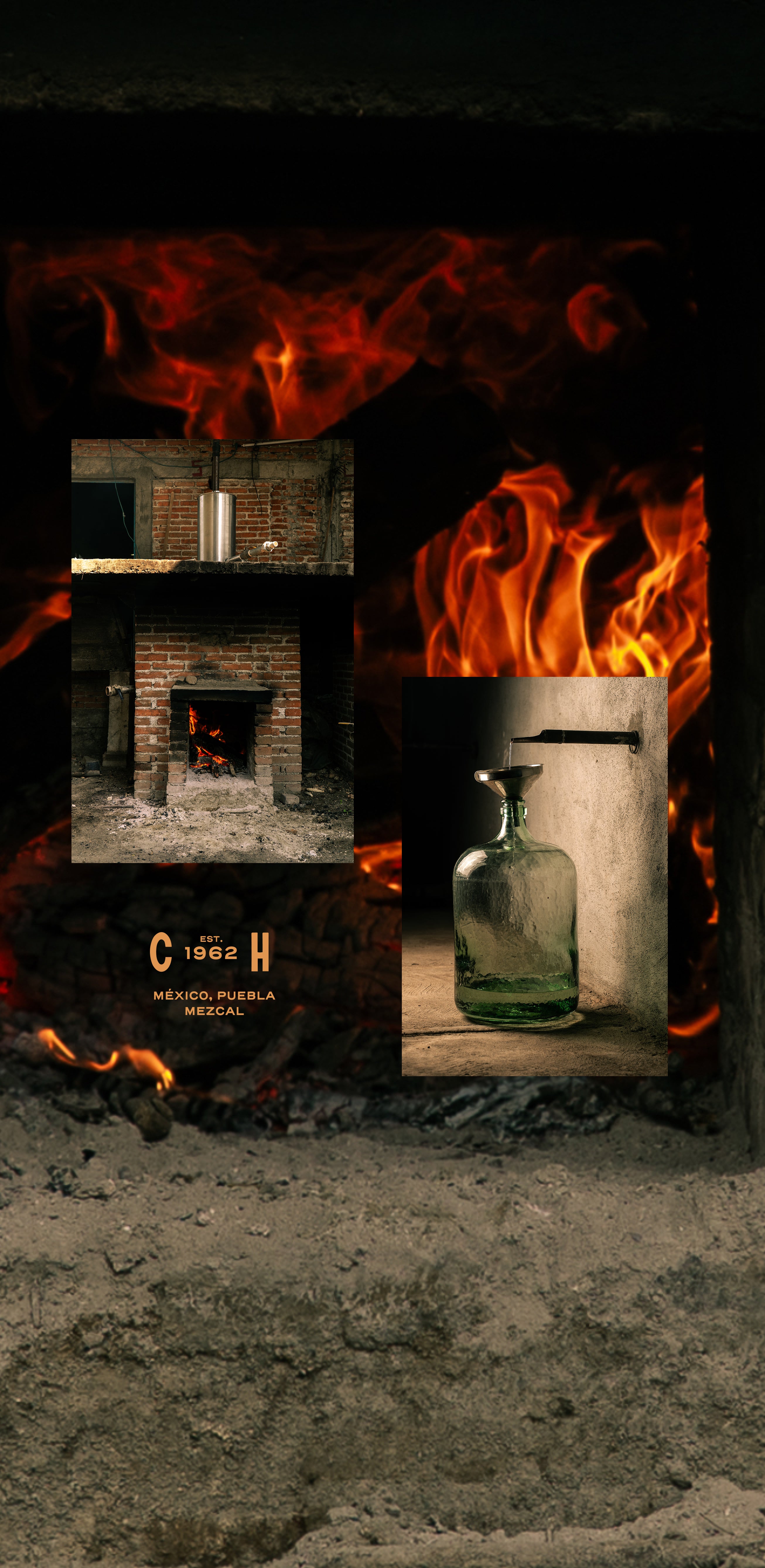Our Process

Step 1
Harvesting
Every bottle starts in the field, with agave that’s given the time it needs to fully mature.
Espadín agaves typically grow for at least seven years. Papalometl, a wild agave with a far longer lifecycle, can take thirteen or more. That kind of patience matters. It means fewer harvests, more scarcity, and deeper complexity in every sip.
During that time, the agave takes on the characteristics of its environment: soil, elevation, climate, neighboring vegetation. When it’s ready, it signals us by sending up a flowering stalk called a quiote. That’s when the harvest begins.
The agave is cut and cleaned by hand, with the hearts, called piñas, trimmed down to make them easier to handle. Some can weigh up to 70 kilograms (154 lbs). We cut them into halves or quarters so they cook evenly during the next stage.

Step 2
Cooking
We still cook our agave the traditional way: slow and underground.
The oven is first lined with wood and tinder to build the fire, followed by stones that are heated until they glow white-hot. The agave is then carefully stacked above the stones. To protect it from burning, we cover the oven with petates, woven mats soaked in water, before sealing the entire pit with soil.
A single opening is left at the top so fresh water can be added as needed to increase steam. The cook lasts four to five days, breaking down the agave’s fibers and developing the base of its flavor.
All the wood we use comes from fallen trees, collected throughout the year. We never cut new trees. It’s one of the many ways we stay aligned with the land that gives us this spirit.

step 3
Fermenting
Once roasted, the agave is sliced into thin strips and moved to large wooden vats to begin fermentation. This stage lasts a minimum of ten days, and it’s where the transformation into alcohol begins.
Our mezcaleras combine ancestral knowledge with modern precision. They listen for the rise of bubbles, watch for shifts in movement and consistency, and use specialized tools to monitor sugar levels and chemical balance.
Timing here is everything. Moving too early or too late can compromise both the flavor and purity of the final spirit.

step 4
Distillation
Distillation is where vapor becomes mezcal.
A wood fire heats the fermented agave in a copper or wooden still. As the temperature rises, the vapors pass through a medium tube cooled by water, then travel into an eight-turn serpentine coil that condenses them back into liquid.
Most producers use four turns. We use eight. That added refinement results in a cleaner, more expressive mezcal.
The water used throughout is cooled, recycled, and reused across batches, and when it’s no longer needed for production, it’s repurposed to irrigate nearby crops. Nothing is wasted if it can be returned to the land.







